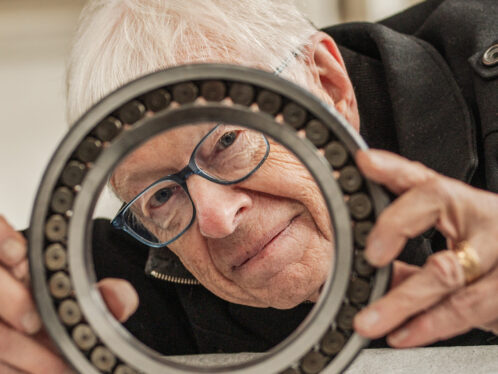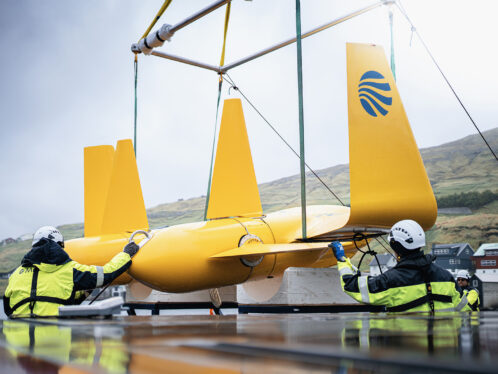
Harnessing the wind at sea
Offshore wind power is one of the most promising sources of renewable energy. In France, an innovative programme is under way: the installation of an offshore wind turbine that floats. Meet Ideol, an innovative new company.
By 2030, just off the Mediterranean coast, floating wind power production could reach an estimated 3 GW.
Paul de la Guérivière
CEO of Ideol
The adventure began in 2010, when engineers Paul de la Guérivière and Pierre Coulombeau conceived the innovative concept of a floating wind turbine, which they believed would prove an indispensable addition to wind turbines that are built onto a base fixed to the sea floor.
To realize their dream the two innovators founded Ideol, based in La Ciotat, just east of Marseille. The company procured a patent for its square-ring platform that can accommodate any kind of turbine. The platform has a central opening serving as damping pool (also patented). Simultaneously, a European consortium was set up with seven partners, including Bouygues, a world leader in civil engineering, and the Ecole Centrale de Nantes, to launch a full-scale test with the support of the European Union’s FP7 programme (the 7th Framework Programme for Research and Innovation).
The objective was to demonstrate that floating wind turbines would be both technically feasible and economically viable. The demonstration project was to take two years and was budgeted at 25 million euros.
Construction would take place in Saint-Nazaire, at the mouth of the Loire River just downstream from Nantes.
SKF takes part in the Floatgen adventure
SKF was commissioned by Ideol to perform the initial audit of the condition of the Vestas V80 turbine purchased for the Floatgen project. A team from SKF Solutions Factory France came on site to examine the main bearings, the quality of the grease and the electrical system of the generator (Baker analyser). An online vibration condition monitoring system was installed for the whole kinematic chain of the turbine (main bearings, gearbox, generator) that will enable SKF to ensure remote vibratory monitoring.
“Once we were established in Saint-Nazaire,” explains Serge Gracia, strategic projects manager at Ideol, “this extraordinary but exciting adventure became a day-to-day reality. For each of us, there was pride in being the first to demonstrate the Ideol floating solution, and in taking part in building the first floating offshore wind turbine in France.”
“We are proud of our work,” he continues. “We’ve overcome technical challenges, and in less than two years we’ve succeeded in building the foundation and developing and creating the transition part and the tower, and we’ve conducted tests.”
Ideol coordinated the entire project and purchased and prepared the turbine. The company asked SKF Solution Factory France to perform a thorough audit, and the turbine was loaded with sensors that would enable SKF to ensure remote vibratory monitoring when installed at sea.
Once the concrete floating system was built, the Floatgen wind turbine was assembled on a wharf apron. It was placed in the water in August 2017 and following its inauguration on 13 October 2017, all operational tests were successfully completed – in particular those evaluating the power production capacity of the turbine.
The wind turbine has now been transported to the SEM-REV test site of the Ecole Centrale de Nantes, 20 kilometres offshore, where the infrastructure necessary for its grid connection was already in place.
In terms of employment, the construction phase of the floating foundation has generated as many as 70 jobs in Saint-Nazaire, not including jobs generated with subcontractors and members of the consortium.
On the economic front, in addition to some 20 million euros in income for the French suppliers involved in the project, Floatgen is, for Ideol, a starting point for a series of deployments, an essential step in confirming its world leadership in this new technology. Already major projects are in the pipeline, such as a wind farm with four 6 MW turbines off Perpignan, in the south of France.
Fair winds seem to be in the future for Ideol.







